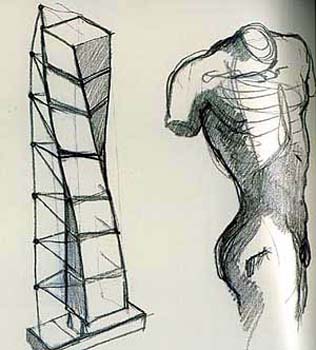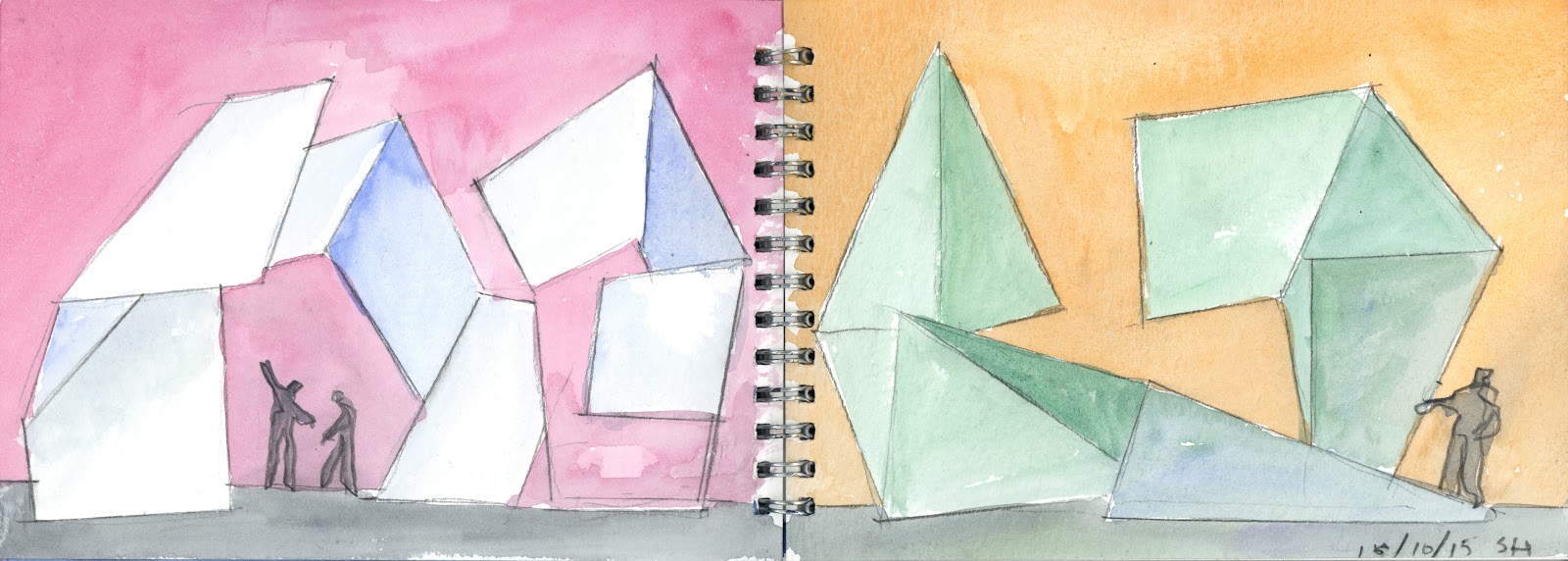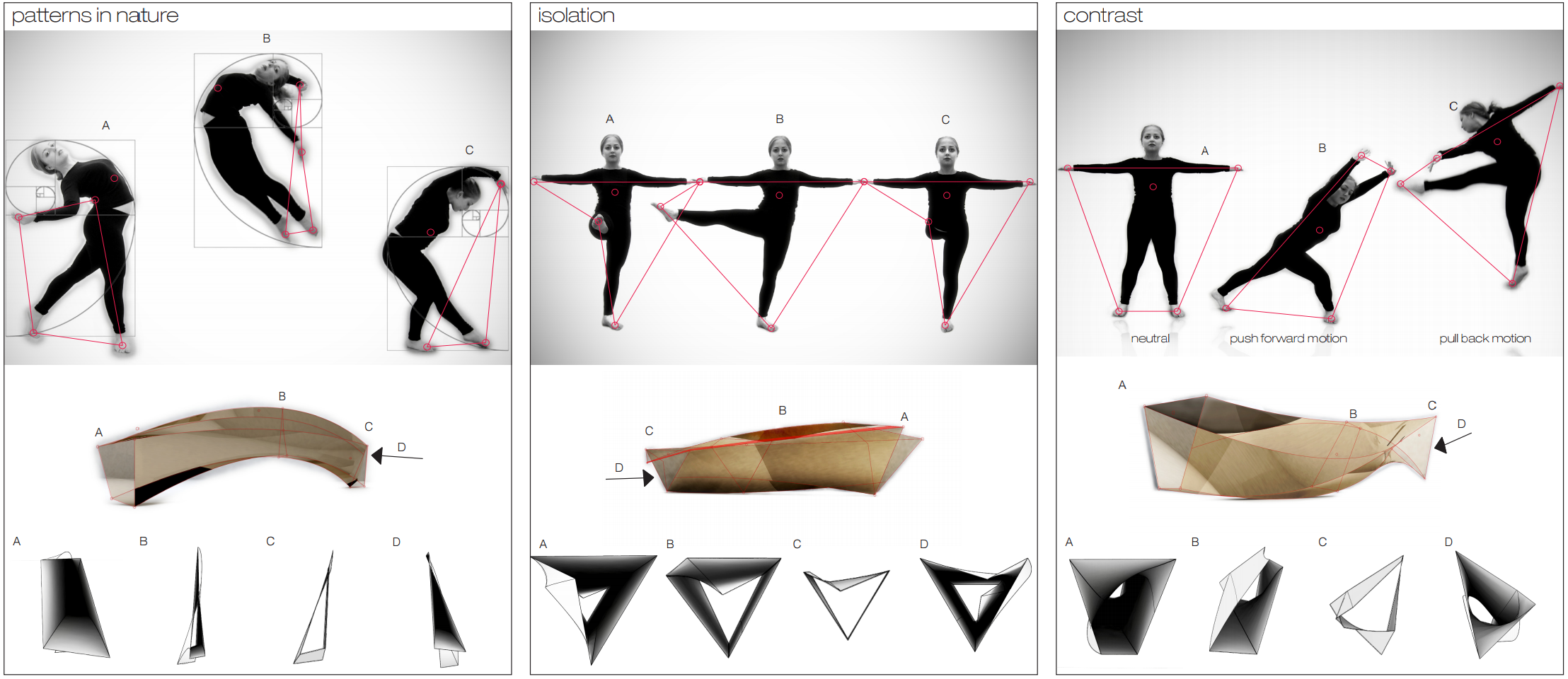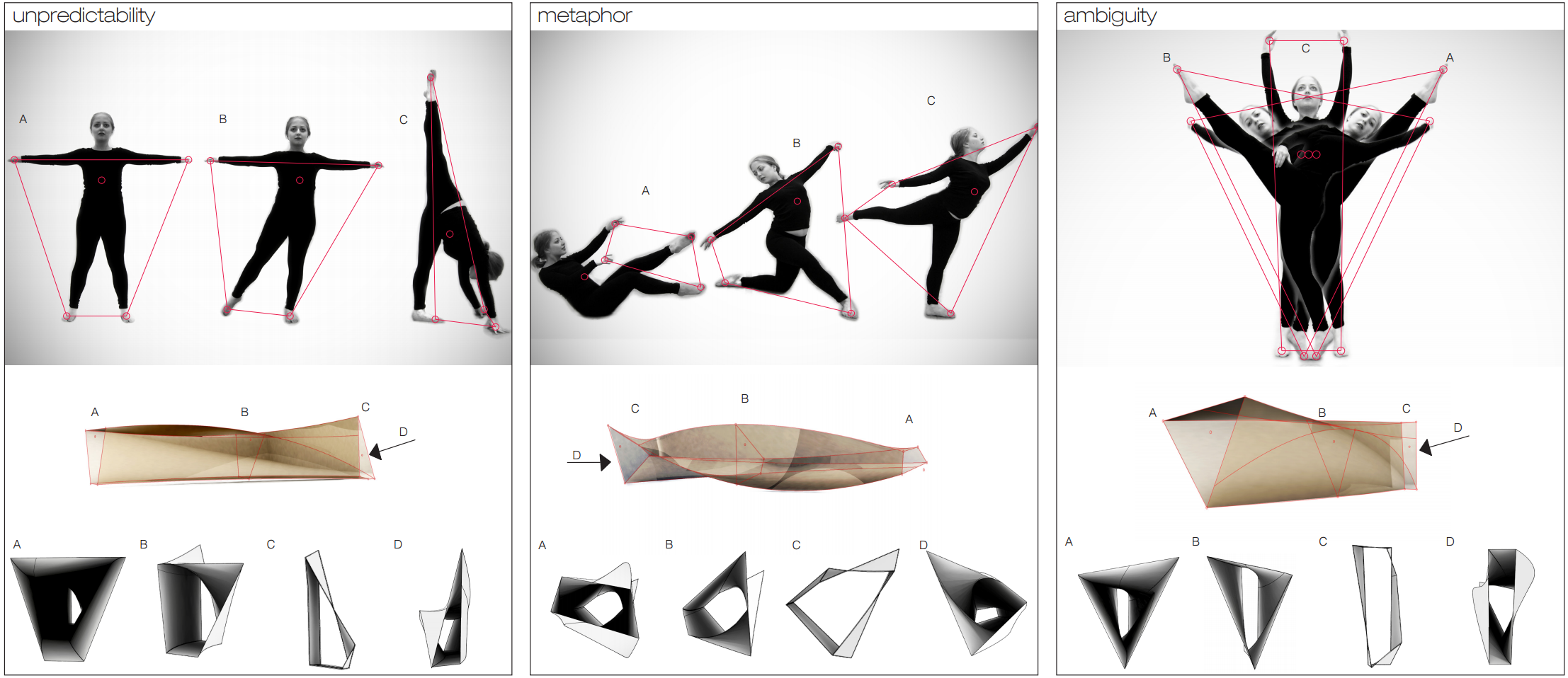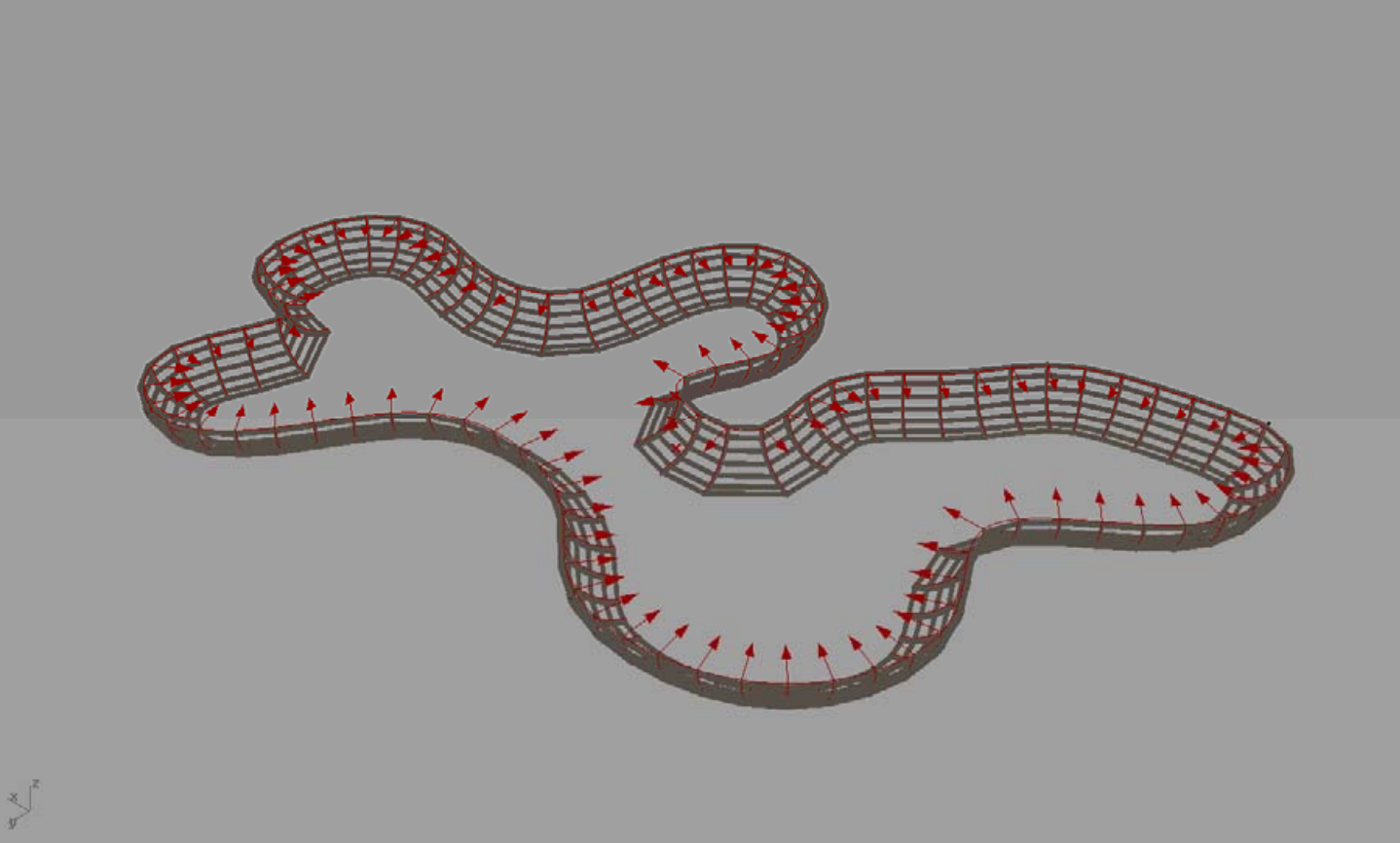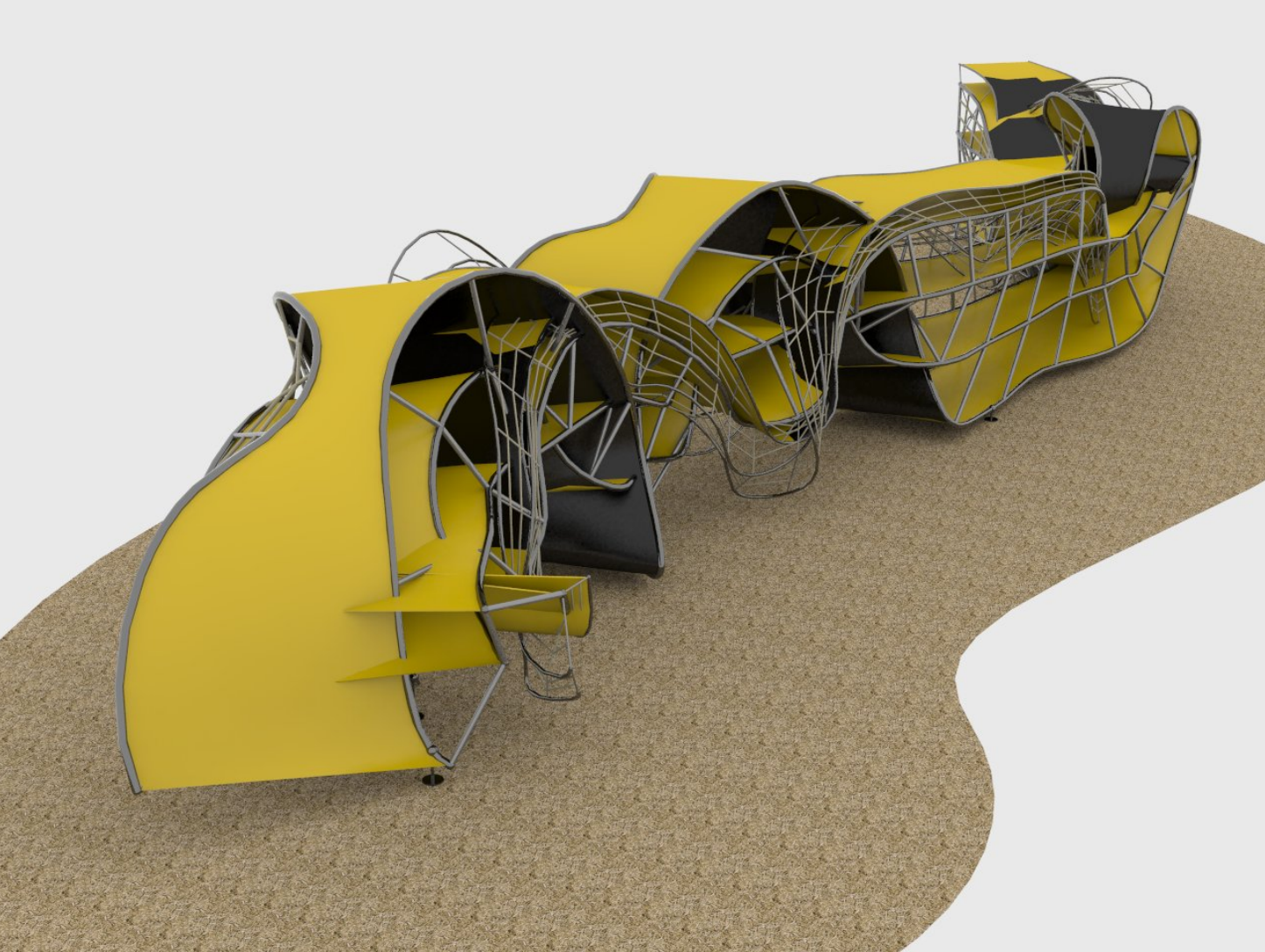Some precedent works as inspiration
The relation between movement and architecture is not something new, and although we don’t find many examples of buildings that directly relate to sports movements, we can find another type of action that has the same complexity and unpredictability in its movements: dance.
In this field there are several precedents that relates the two subjects: dance and architecture. Some of the examples are buildings that directly reflect the form in a specific position, some try to catch the dynamicity of the movement and apply to a static building, others are arts installations which try to capture the essence od dance. We can even find proposals that try to parameterize the movement of a dancer and with it construct a 3D model (similar to my intention).
The examples shown below are all related to dance and architecture, but could easily be a movement of an athlete instead of a dancer.
- Although this a more formal example, the Turning Torso by Santiago Calatrava show how the human body and physiology can be inspiration to architecture. In this case it captures a static moment of the body, but can also be applied to a body in movement.
- Steven Holl argued that things such as dance, poetry and music can be inspirations to architecture as well as any other “traditional” inspirations, like the nature. In his sketches he presents his vision of how dance inspires architecture through its shape.
- In this project by Ashley Brien, she addresses this relation between architecture and dance in neuromorphic standpoint. She tries to understand how the brain perceives the movement of dance and translate this to an architectural shape, presented below.
- In Dimitra Stathopoulou thesis, she uses the Digital Fabrication tools and also MoCap to record the movement of dancers and with the data collected generate architectural forms parameterized. The two studies cases she developed were a skate bowl and a playscape, both using the movement of the dancer as primary source to their construction.
